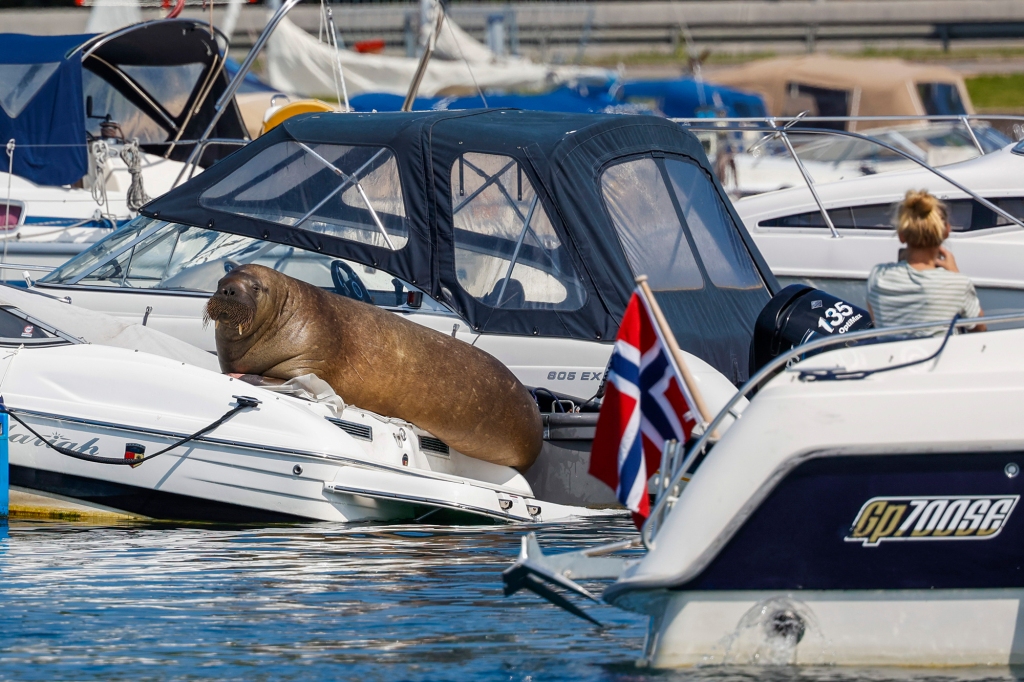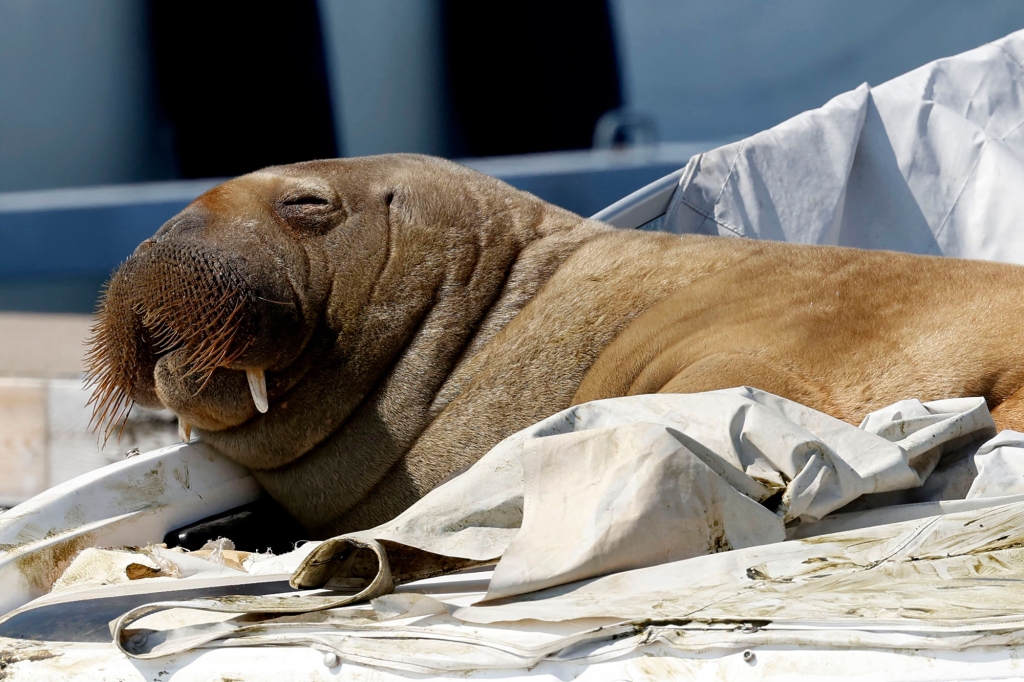Norway euthanizes beloved walrus Freya because of crowds
Freya, a social media famous walrus in Norway, has been euthanized after frenzied onlookers wouldn’t stop trying to get close to her to take pictures.
The 1,320-pound female walrus became a popular attraction in recent weeks — delighting crowds of spectators in the Oslo Fjord by clambering atop of boats, even playfully sinking some — despite repeated warnings from officials that onlookers should stay away from the massive marine mammal.
As recently as last month officials said they hoped Freya would leave the populated inlet on her own accord and that euthanasia would only be a last resort if there was a risk to humans.
Norway’s Directorate of Fisheries said Freya was put down in a humane manner early Sunday “based on an overall assessment of the continued threat to human safety.”

“Through on-site observations the past week, it was made clear that the public has disregarded the current recommendation to keep a clear distance to the walrus,” it said.
“Therefore, the Directorate has concluded, the possibility for potential harm to people was high and animal welfare was not being maintained.”
Walruses are also a protected species.
Authorities said that people had been seen swimming with Freya, throwing objects at her, and trying to get close to her for photos. The Directorate of Fisheries released a photo showing a large crowd of people, including children, standing very close to the walrus.
The head of the directorate, Frank Bakke-Jensen, said other options — including moving the hulking walrus elsewhere — were considered, but authorities concluded it wasn’t a viable option because of the “extensive complexity of such an operation.”
“We have sympathies for the fact that the decision can cause a reaction from the public, but I am firm that this was the right call,” Bakke-Jensen said. “We have great regard for animal welfare, but human life and safety must take precedence.”

Rune Aae, a biology professor at the University of South-Eastern Norway who had been tracking Freya’s sightings, condemned the decision to put down the young, seemingly healthy mammal as “too hasty.”
He wrote in a Facebook post that government officials had a boat out keeping tabs on the walrus’ movements and could warn the public at any time not to engage in water activities near her.
“Freya (would have) sooner or later gotten out of the Oslo Fjord, which all previous experience has shown, so killing her was, in my view, completely unnecessary,” he wrote. “Norway is the country that killed Freya after being around for over two years around the entire North Sea. What a shame!”
Freya reached celebrity status far beyond Norway’s shores this summer after videos of her climbing on top of boats in Oslo to bask in the sun went viral.

Freya was videotaped chasing a duck, attacking a swan, and spending hours napping on various vessels too small to support her large frame.
Atlantic walruses normally live in the Arctic, and most are wary of human, but Freya — named after the Norse goddess of love and beauty — seemed unafraid of people.
It is believed that Freya came from Freya from Svalbard — a Norwegian archipelago in the Arctic Ocean more than 1,200 miles away from Oslo.
It is unusual but not unheard of for walruses to travel into the North and Baltic Seas. Another walrus, nicknamed Wally, was seen last year on beaches and even a lifeboat dock in Wales and elsewhere.
With Post Wires
Read the full article Here


